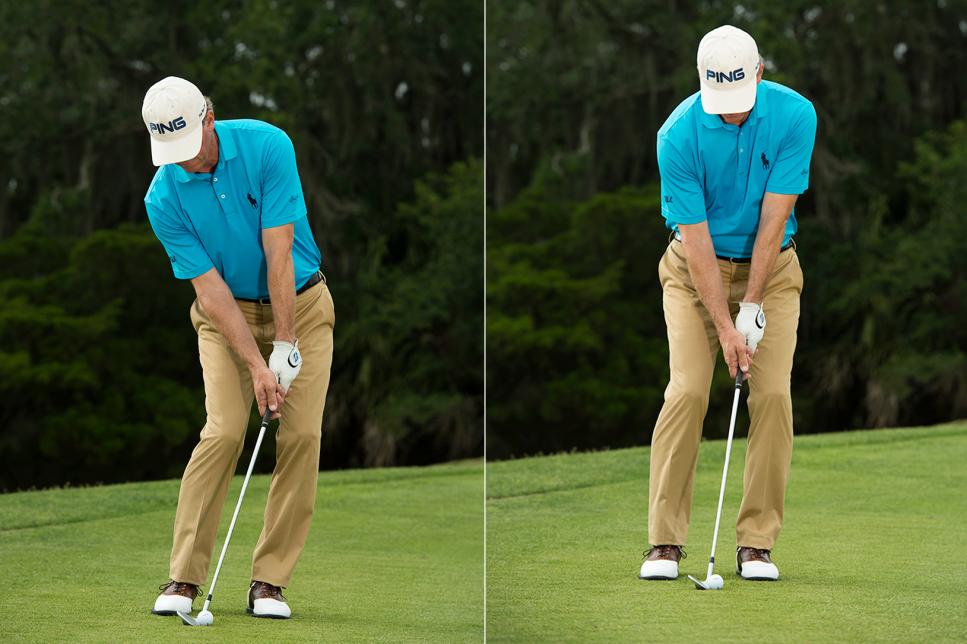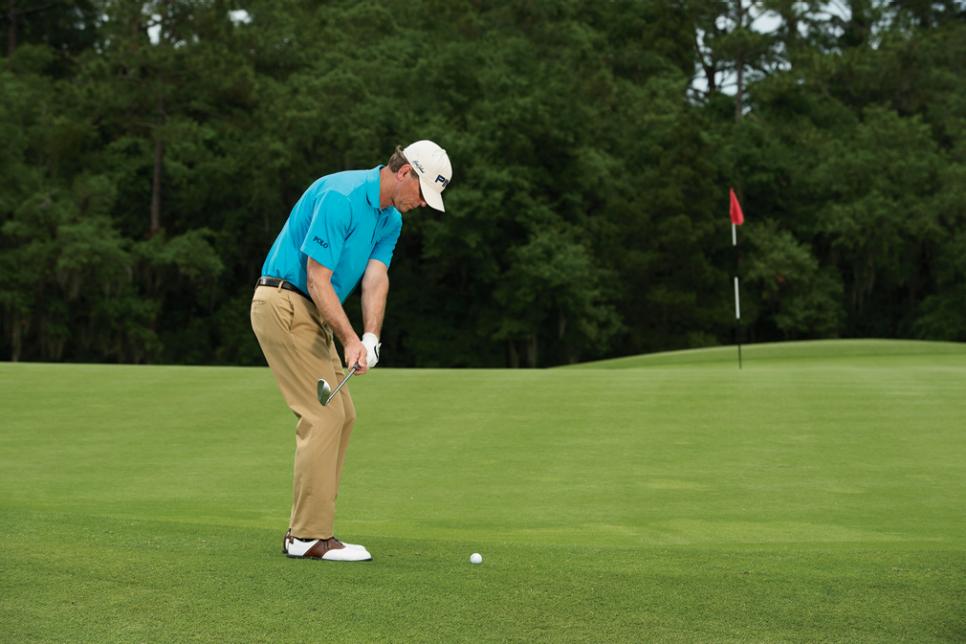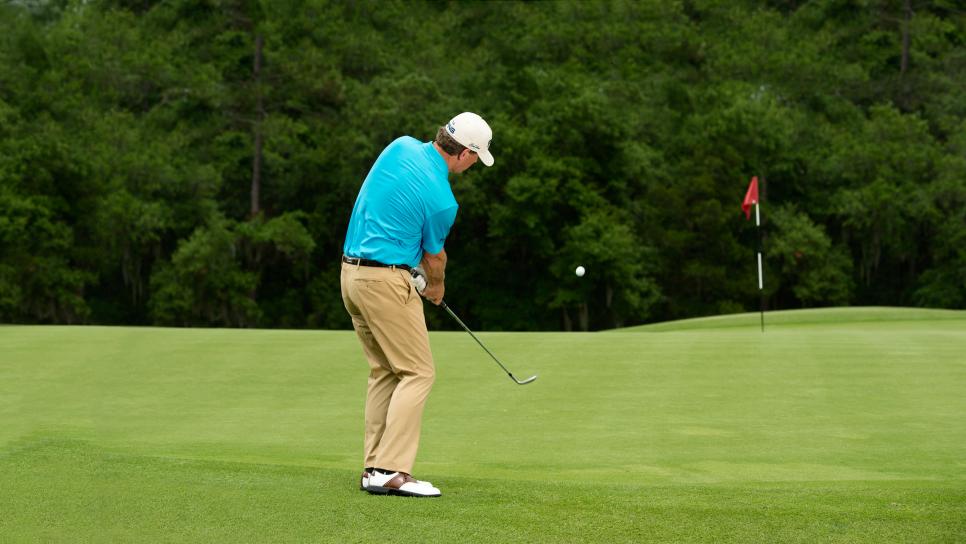The Right Way To Chip
Chipping looks so easy when you see a good player doing it. On the flip side, it can be hard to watch when someone is struggling with these little shots.
The No. 1 issue is making solid contact. Why? Because the club’s not moving fast enough to keep going if you hit the ground—you chunk it halfway there. And if you catch the ball thin, it skips over the green. Contact is everything. Here’s how to get it right. —With Peter
CONCEPT: SET THE LOW POINT
Solid strikes come from getting the low point of the downswing to happen in the right spot. You want it to be at the ball or slightly in front of it so you hit the ball first, then brush the turf.
Golfers with contact problems usually set up poorly. They tilt away from the target because they instinctively want to help the ball up. Then they push their hips toward the target because everybody says to set the weight forward at address. These moves drop the right side of the body lower than the left side, which shifts the low point of the swing behind the ball. That’s a major cause of chunks and skulls.

SETUP: LEVEL THE SHOULDERS
For a basic chip, use a 52- to 56-degree wedge. Play the ball center, and get your weight forward so your left shoulder is over your left foot. Your trunk is the heaviest part of your body, so that’s what you should move forward, not the hips (above right).
Now here’s the key: Grip with your right hand first, keeping your right arm straight. The right shoulder should feel high. What you’re doing is measuring the distance to the ball with your right arm. Most people do it with the left arm, and when the right arm straightens coming down, the club hits the ground too soon. Finally, add your left hand, feeling like your shoulders are level.
See the photos above. In the “no” setup, I’m tipped back (above left). I’ve pushed the handle and my hips toward the target. I might feel “forward,” but my club will bottom out behind the ball because my right side is too low.
In the “yes” setup, I’ve gripped with my right hand first, keeping the shoulder high (above right). My whole body is slightly left—and set to go.

J.D. Cuban
SWING: FOLD AND UNFOLD
Once you get the setup correct, you won’t be fighting yourself to hit the ball before you hit the ground. The long right arm and high right shoulder have set your distance to the ball. A good backswing thought is, Fold the right arm, hinge the left wrist. That moves the clubhead upward so you can hit down slightly at impact. Don’t let the right shoulder move up on the backswing; if anything, feel as if it turns a little to the inside (above).
On the downswing, let your right arm unfold, keeping the elbow tucked close to your side (below). Feel like your right shoulder doesn’t go lower than it started at address. If you do that—and keep a little bend in your right wrist (no flipping!)—you’ll get a crisp strike on the ball.

Todd Anderson, No. 9 on Golf Digest’s 50 Best Teachers, is director of instruction at the PGA Tour Performance Center at TPC Sawgrass, Ponte Vedra Beach.
Originally posted on golfdigest.com
